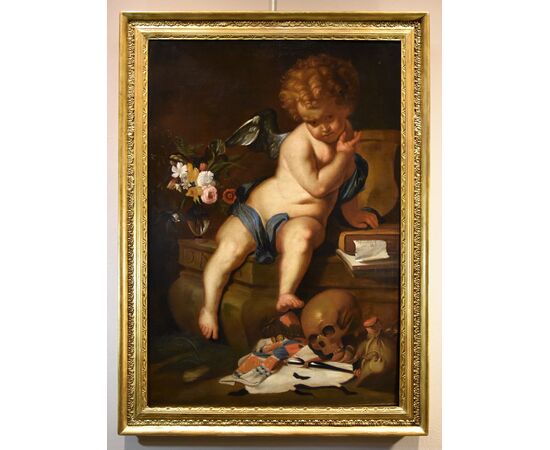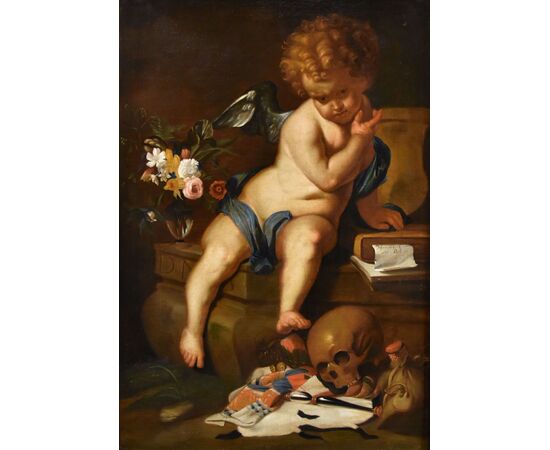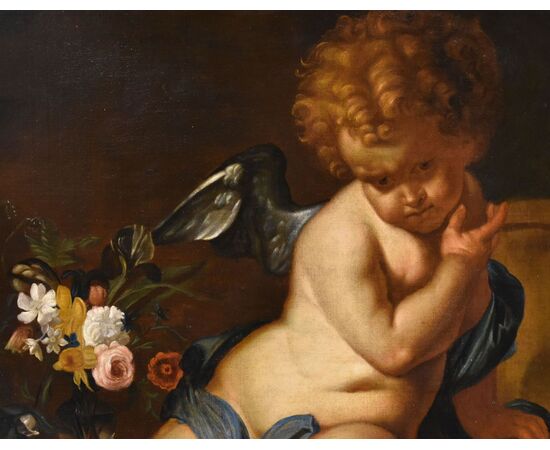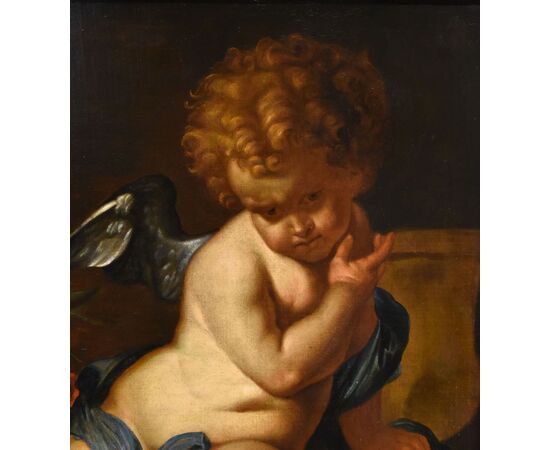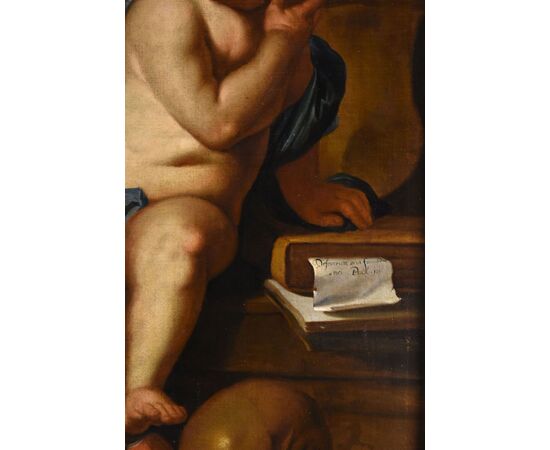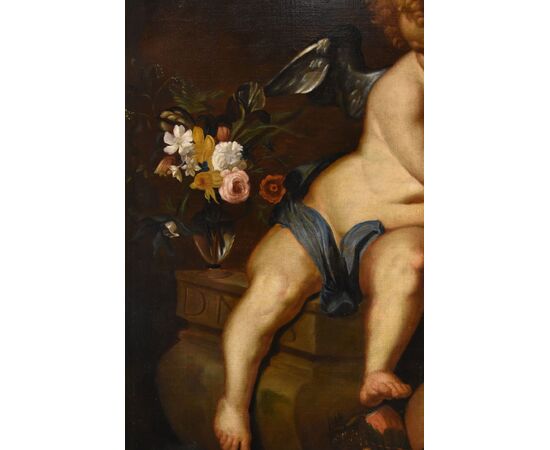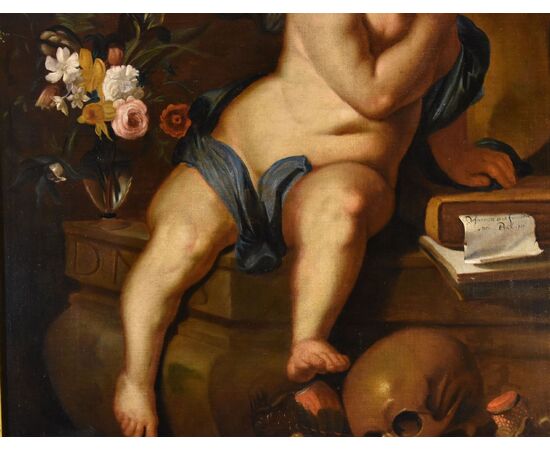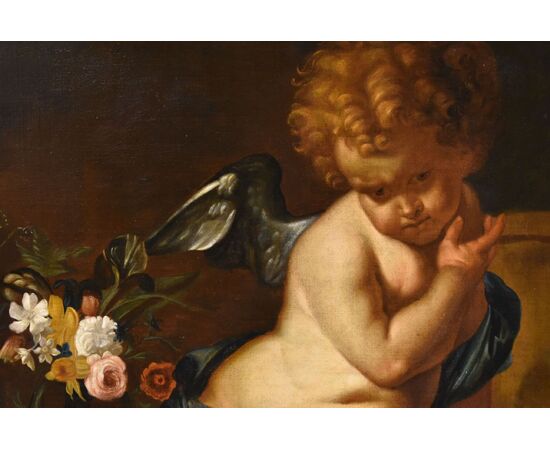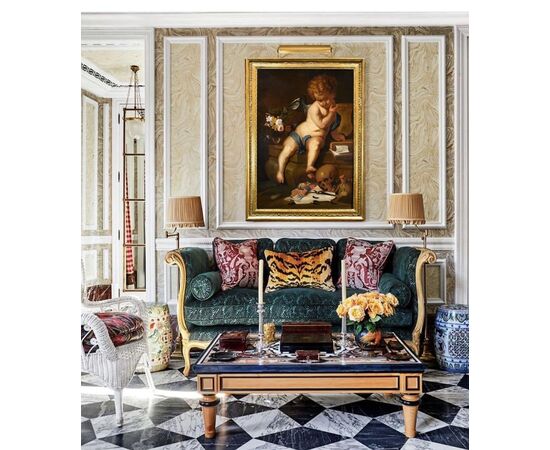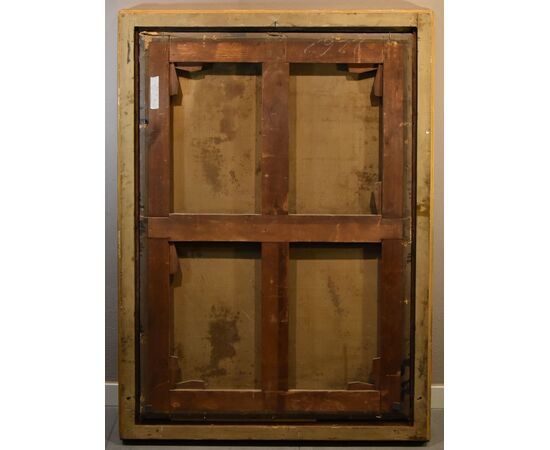Allegory of the vanity of life or youth, Erasmus Quellinus II (Antwerp 1607-1672)
Erasmus Quellinus II (Antwerp 1607 - 1672)
Vanitas (as an allegory of the vanity of life or youth)
Oil on canvas - cm. 121 x 84, framed cm. 135 x 98
The work is accompanied by an in-depth study written by Prof. Emilio Negro, of which we present some excerpts.
- FULL DETAILS CAN BE CONSULTED DIRECTLY AT THE FOLLOWING - LINK -
The theme of the painting we are proposing is a singular and rare "Vanitas", a subject of strong moral value that, in the pictorial context, refers to a composition with symbolic elements alluding to the theme of the transience of life, and therefore intended to encourage the viewer to meditate on the transience of human destiny and the fragility of worldly pleasures.
Such subjects, which were particularly successful in the Flemish context, are works of great charm, interesting to study and often difficult to decipher; the protagonist of our canvas is a capricious cherub, sitting on a sarcophagus, a sort of anthropomorphic Carpe Diem (seize the day) pictorial, which invites us to meditate on the fleetingness of life and to enjoy the moments of happiness granted by it; this without worrying about the alternating fortunes of fate, symbolized by the foot of the putto trampling on gold coins, precious fabric, scepter, ermine stole, skull, hunting horn and books.
Next to it is a still life of colorful flowers, collected in a crystal vase, whose presence takes on a clear allegorical meaning, since they constitute the metaphor of the transience of youthful beauty which, like fresh flowers, is destined to wither.
[...]
Regarding the pictorial origin of the composition in question, it should first of all be noted that it is an interesting replica, with some modifications, of a work executed by Erasmus Quellinus the Younger (the figure of the putto) and Daniel Seghers (the still life).
A version of the same composition is also known entitled 'Allegory of the passage of Youth', passed at Sotheby's in Amsterdam as Cornelis Schut and Daniël Seghers (12.12.1991, Old master Paintings and Drawings, lot 218, Price €16,630, then sold in London as Thomas Willeboirts Bosschaert (Sotheby's 16.12.1999, lot 59, Auction price: €126,592 / £80,000).
Here is the link to the painting: https://rkd.nl/en/explore/images/record?filters%5Bkunstenaar%5D=Willeboirts+Bosschaert%2C+Thomas&...
And again the Vanity attributed to Thomas Willeboirts Bosschaert and passed in Vienna by Dorotheum (17/10/2007, and estimated: €18,000-24,000, link: https://www.invaluable.com/auction-lot/thomas-willeboirts-bosschaert-bergen-op-zoom-1613-228-c-ms7xg...#
[...]
These reasons make it possible to connect this Vanitas to the modus operandi of the aforementioned Erasmus Quellinus the Younger (Antwerp, 1607-1678), one of Rubens' closest collaborators in the 1630s, here assisted by the intervention of a valid collaborator trained within his active workshop. Descended from a renowned family of artists (since his father was the painter Erasmus Quellinus the Elder) Erasamus Quellinus II operated mainly in Flanders where his activity is evidenced by the numerous compositions similar to ours, attributed to him and kept in the most important public and private collections. Furthermore, he was the head of a successful atelier in which numerous students were trained, including his sons and nephews. It is true that in the canvas in question, credibly destined to adorn the walls of a noble residence of a collector, scholar or humanist, there emerges an accurate painting, especially in the insistent research of details, in warm colors, which are specific qualities of the best works executed by Erasmus.
For further information, please contact us.
The work, like all our objects, is sold accompanied by a photographic certificate of authenticity in accordance with the law.
Follow us also on:
https://www.instagram.com/galleriacastelbarco/?hl=it
https://www.facebook.com/galleriacastelbarco/

